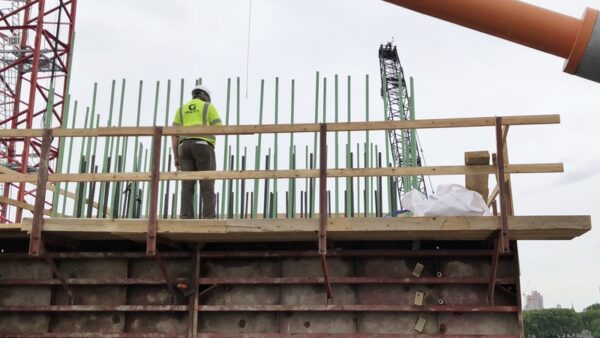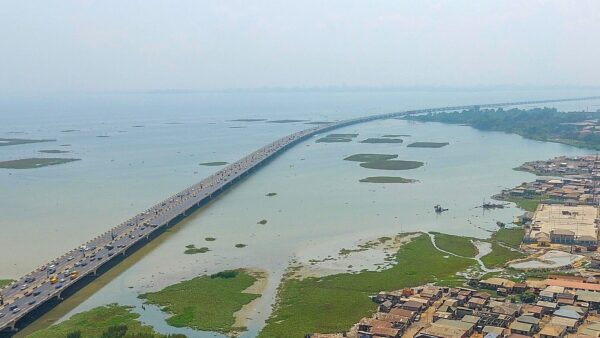Researchers in Texas are seeing if they can prop up bridges with giant building blocks that a child could lift.
The team from the University of Texas at Arlington is testing the use of 2-metre-long expanded polystyrene blocks, known as geofoam, to slow down the sinking of roads and bridges built on compressible soil.
Geofoam blocks cut down on sediment, can be stacked, and do not place stress on the soil, so structures are safer and more stable– Anand Puppala, UT Arlington College of Engineering
Anand Puppala, associate dean of research in the UT Arlington College of Engineering, says that most of the world’s largest cities have soft soils that compress over time, causing roads and bridges to sink.
He said a good number of Texas’s 52,000 bridges now have annoying bumps where they hit land due to the soil settling under the pavement.
His team just received $336,000 from the Texas Department of Transportation to continue investigating whether geofoam blocks, which weigh between one and three pounds per cubic foot, might be the answer.
“Geofoam blocks cut down on sediment, can be stacked, and do not place stress on the soil, so structures are safer and more stable,” Puppala said. “They are also environmentally safe and designed in such a way that they do not degrade.”
In 2012 the team installed foam blocks near a bridge in Johnson County to try and slow down settling at the bridge’s entrance. By then the patch of ground had settled 17 inches since 1995 due to heavy truck traffic – a rate of nearly one inch a year.Â
Since then the team has measured a total of less than one inch of settlement.
The new grant allows more monitoring to make sure the blocks continue to slow down the settlement rate. “Several methods were used previously to try to stop the settling, but none worked,” Puppala said. “We are encouraged by the results of using the geofoam so far. We are discussing using this material at other bridge sites as well.”
To install the blocks, crews dig out the area where they are going to be used, stack the blocks on top of each other to achieve the necessary grade and road width, then cover them with soil, which is then packed down before pavement is laid on top of the stack.
For more information click here.
Photograph: Workers install geofoam blocks under a highway (University of Texas at Arlington)






